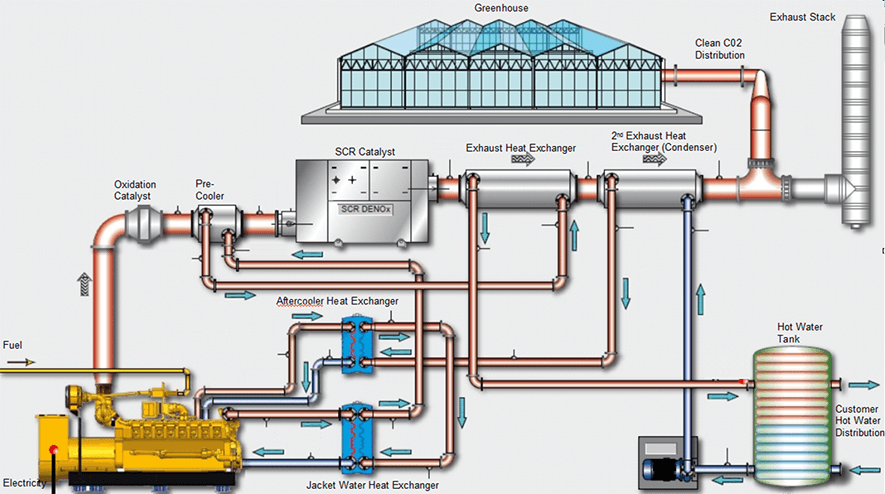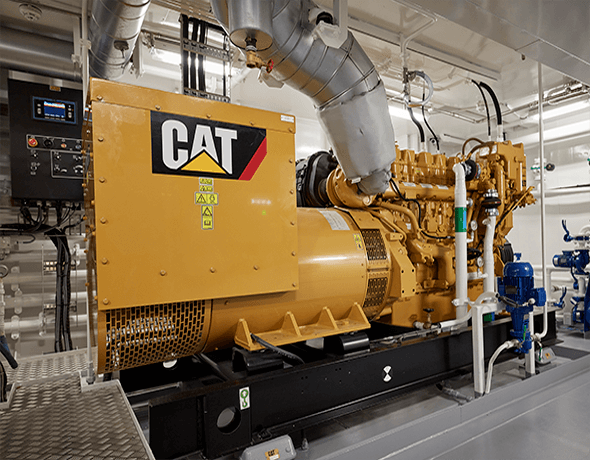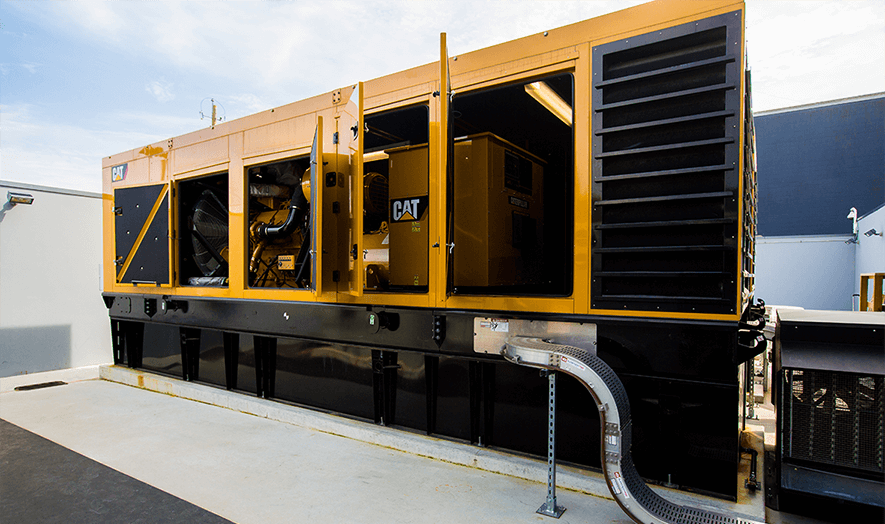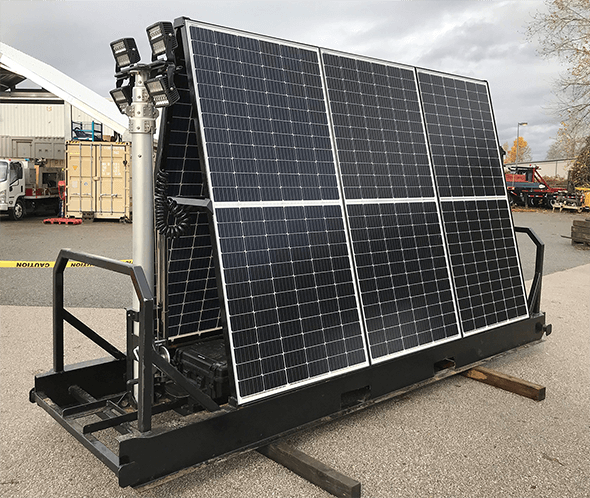Whether it’s technologies designed for stationary standby power during blackouts and emergencies or generators used to help offset diesel consumption, every generator must be reliable and provide the right level of power for the application.
As a result of stricter regulations on emissions and advances in clean technology, solutions that can lessen the impact power generation has on the environment are starting to take centre stage. Generators that produce less particulate matter and operate with greater efficiency are laying the groundwork for new opportunities and a chance for companies to bid on work that may require low-emission equipment.
Recognizing new technology as not just an investment in business, but an investment in a greener future will be key to driving power generation solutions in the coming years. They may not all apply to rental applications, but they are all changing the way we are powering a better world. Dan Tuan, director, power systems sales at Finning Canada discusses the top trends and technologies that are shaping the power systems industry and helping to support more sustainable power generation applications.


Natural gas is already well known as an affordable, clean, and reliable fuel choice for power generation. Natural gas engines have seen big improvements in performance while maintaining their reputation as a low-carbon-emitter. Improvements in fuel delivery technology have led to the evolution of gas engines that not only offer great fuel efficiency but increased transient response, bringing standby gas engine designs within the realms of diesel standby performance. This has also led to an increased use of natural gas products within rental fleets.
Natural gas is now being used to bridge the gap of renewable fluids and wider adoption could help contribute to meeting global targets for greenhouse gas emissions. Combined with other renewable energy such as solar and wind, this could be accomplished even faster.
There is also a trend in mining to move to gas engine generator sets and battery storage products to replace and offset diesel costs. New LNG infrastructure can bring natural gas straight to a site and provide greater cost savings and efficiency, and that’s taking into account the emissions from trucks required for site operations.


Gas engines have fairly good efficiency when it comes to burning fuel. And improvements in dual-fuel technology, are providing greener option for diesel generator sets. Dual gas blending works by displacing diesel with a lower cost gas. The latest system, specifically designed for the oilfield, directly injects natural gas into the combustion chamber, raising the blending rate from 70% to 85%, ensuring high performance while maintaining lower emissions.
In many cases it can cut fuel costs by up to $100/eMW for each hour of generator set operation while maintaining the power and performance of a diesel engine.
Reliability is key in power generation and in many cases, imperative to operations. Remote access monitoring of the equipment means the health and maintenance of the generator can be managed remotely, eliminating the risk of unplanned failures and providing notifications immediately to deal with outages or issues.
Standby assets are monitored in real time standby mode, ensuring battery and charging systems are online and healthy, control systems in auto, versus inadvertently in maintenance mode or manual. Fail to start, or shutdown alarms are instant and can be set as required.
Telematics for construction equipment has been around for years but more recently there has been more uptake in the use on stationary assets and smaller equipment, including power generators. It can monitor rental generators to ensure they are running efficiently while keeping track of their location. Whether telematics is managed internally or by an equipment dealer, it can provide real-time data into what is happening on-site, from engine temperature, load factor, fuel usage and voltage and notifications can help mitigate the risk of downtime due to failures.
Although the industry is seeing a conscious move toward natural gas, there are still applications where diesel is required and as a result, diesel gensets are still one of the most common generators in rental and across the standby industry.
Whether it’s an emergency outage, planned project or a temporary surge in demand, diesel gensets are the primary technology for standby applications. With the onset of Tier 4 engines we have seen great strides in emission reductions and a shift from engine emission systems to exhaust aftertreatment, which increases the engine fuel efficiency and focuses on cleaning exhaust gases to ensure engines meet emission reduction targets.
Add to that, new mechanical and software-based technology and we are starting to see improvements to the entire supply chain, from the building of the engine and generator to the person installing it and even the size of truck needed to transport it. These significant improvements in power density have engines putting out more horse power than ever before and are key to offering reduced footprints, and lowering upfront costs. However, larger Tier 4 engines are more bulky due to aftertreatment systems that must be factory installed. As a result, this has restricted the sizes available for generator rentals as the units are too large for mobile applications.


Solar microgrids provide cost effective power for on- and off-grid communities and commercial or industrial installations. Combining renewable energy with traditional generation, from utilities or generator sets can help develop an energy system specifically designed for your needs.
Microgrids combine all sources into a single, controllable entity to optimize the flow of energy so it can be produced at the lowest total cost. However, the reliability of renewable energy, specifically wind and solar, can be inconsistent. Wind turbines and solar panels rely on more dependable electric power as backup or for storage, through diesel or battery power.
Designing the system for maximizing renewable energy penetration directly offsets the diesel fuel usage by delaying the start-up of the diesel generator. Integration of these technologies will help realize an energy system’s peak efficiency and emissions reduction.


Utility scale battery storage is another big trend that is set to transform the industry in the near future. As a low-cost energy storage solution, it will reduce the demand for coal and natural gas and help boost renewable energy production.
Remote locations will experience some of the biggest benefits. By utilizing spinning reserves to charge batteries, improving load range management and efficiency, and discharging during low peak hours, battery storage can significantly improve fuel efficiency and reduce consumption. For those municipalities looking for a more efficient source of power, supplementing with battery storage, provides a simple and effective plug-in solution.
Deployments of combined cool/heat power (CHP) is yet another power systems solution helping to conserve energy and further reduce emissions. CHP systems have the ability to run at a combined efficiency of up to 90%, helping to offset natural gas consumption. They use the waste heat from electric power generation for heating, cooling, dehumidification and other processing applications.
For businesses like greenhouses, municipalities looking at district heating, or islanded remote locations who have an increased focus on sustainability, CHP provides the heat they need while lowering energy costs by combining both sources with one asset. Providing reliable power and lowering GHG emissions.
You can’t talk about power solutions without mentioning green hydrogen. There are big opportunities for it to be applied across a wide range of sectors, in particular O&G who face significant hurdles around cutting fossil fuels. Scaling up green hydrogen will be essential to helping global economies achieve net zero emissions by 2050.
Green hydrogen is produced using electricity from renewable resources. This may help solve the storage problem that plagues wind and solar power. When demand for renewables is low, excess electricity can be used to power the electrolysis that is needed to split the hydrogen and oxygen molecules. The hydrogen can then be stored or sent down a pipeline.
Gas engines can blend H2 today. From existing fleets, to new products with their adaptability for the short term and long term, H2 is gaining momentum in the industry.
Reliable power is crucial for production, helping to control costs and provide peace of mind. When a generator goes down one of the biggest challenges is having the right parts and technicians available to get it back up and running. Many dealers now offer flexible, customized service agreements based on the customer's business needs. Providing access to reliable service, parts, repairs and immediate response, as your equipment can be monitored remotely, whether you rent or buy.
Technology specialists and data analysts can also be used to monitor machine activity and analyze data to help counteract potentially negative outcomes and mitigate failures. When companies go this route, it allows the technicians the ability to restart the generator or provide backup power if needed. Dealers can provide real-time generator status and insights on the generator’s battery voltage and coolant temperature so companies can be confident that their generator will start on command.
When it comes to power generation technology, there is no one-size-fits-all solution. When considering a power generation portfolio, diversity of supply and maintaining a balance should be a priority, whether systems are purchased or rented.
Power generation technology is advancing quickly and it’s resulting in significant emissions reductions, quieter operation, increased fuel efficiency, optimized performance and greater reliability. Emission regulations are here to stay but perception is also shaping the way companies are operating - and to stay competitive, they will need to embark on a new way of thinking about power generation and how to reduce their environmental footprint.
Click here for more information on power generation solutions.
Share This